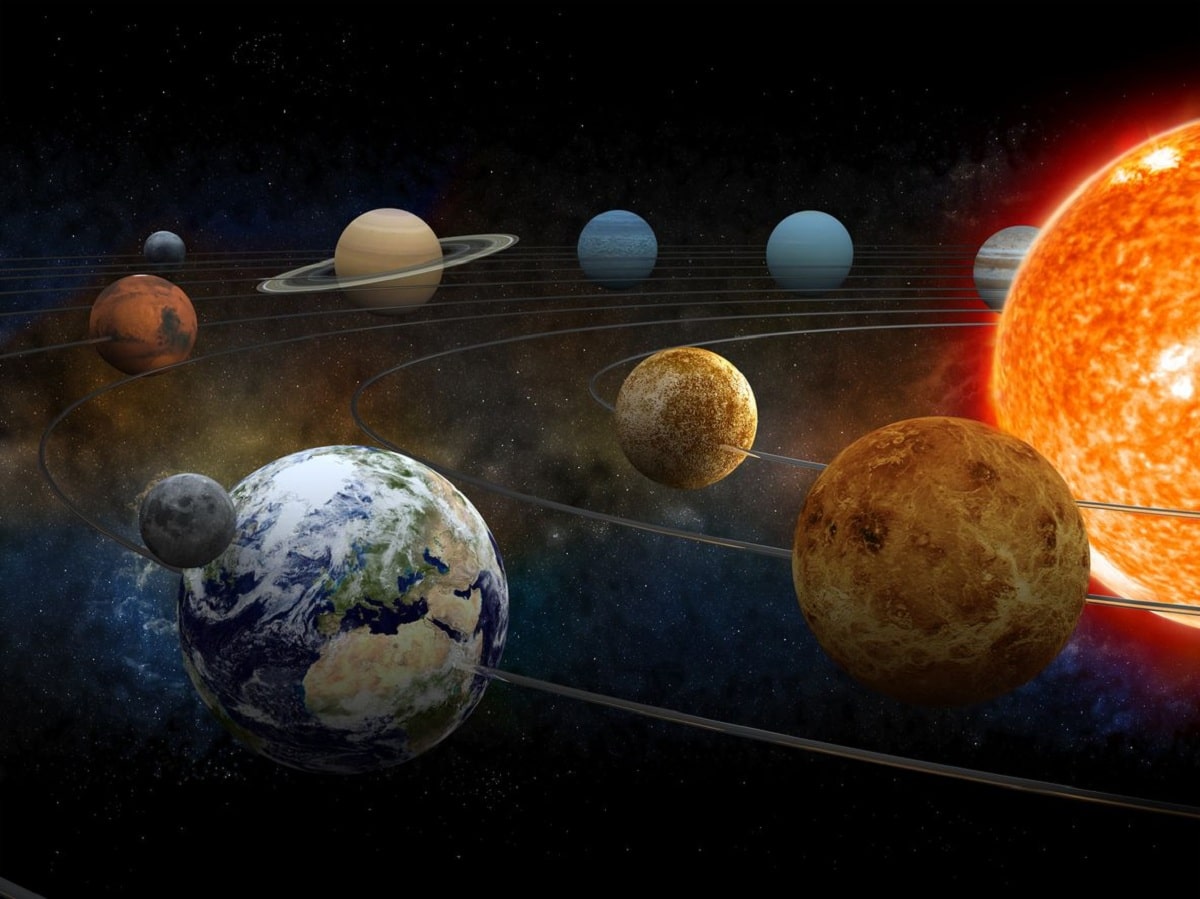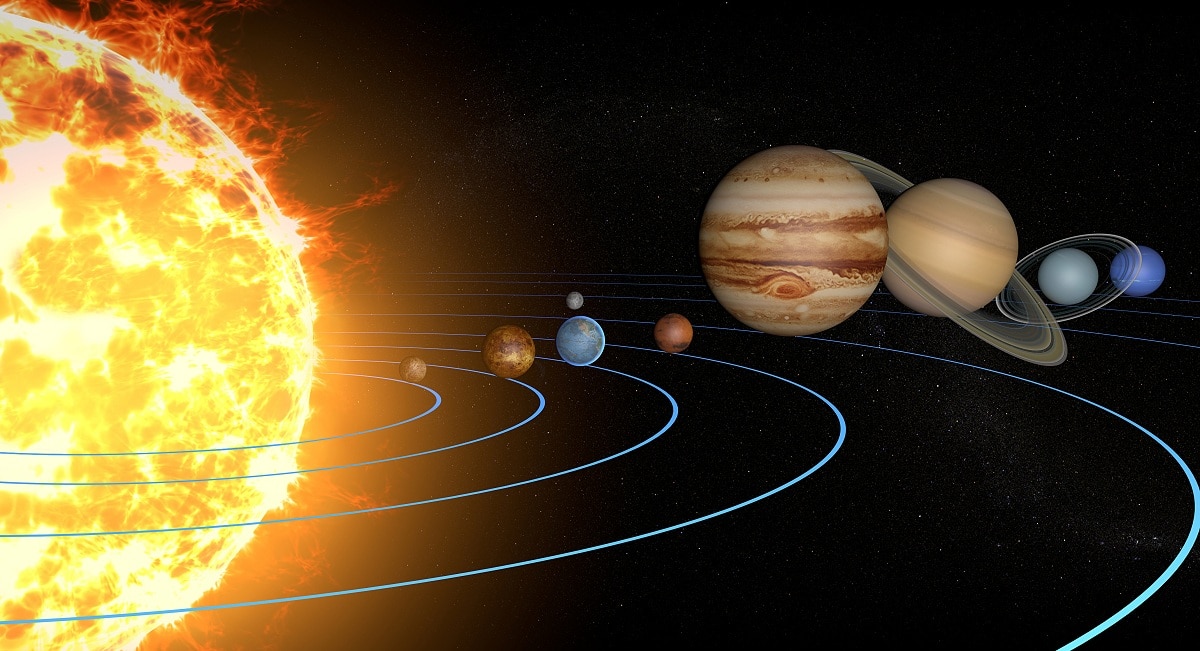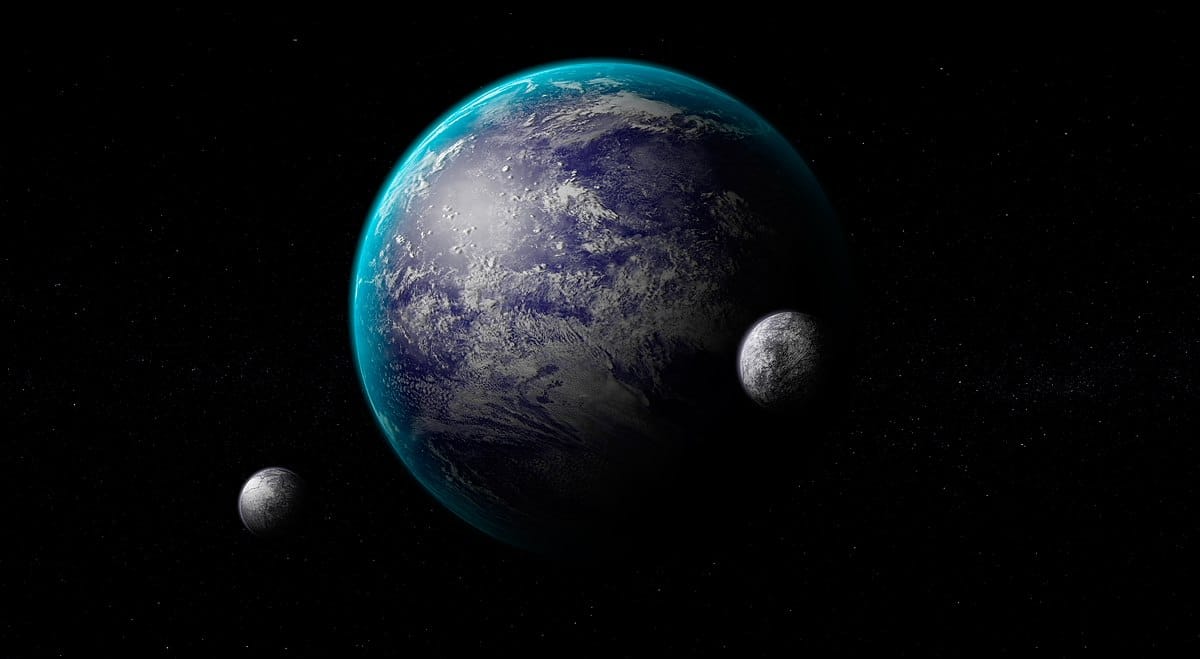
We live on a planet that is within the solar system, which in turn is surrounded by other planets. However, there are some people who are well aware of the definition on what is a planet. In astronomy and science there is a definition according to the characteristics and their formation.
Therefore, in this article we are going to tell you in detail what a planet is, its characteristics, formation and much more.
what is a planet

A planet is a celestial body that orbits a star massive enough to be in hydrostatic equilibrium (between gravity and the energy produced by its core). this balance allows it to maintain its spherical shape, dominate its orbit (it prevents other objects from getting in its way) and it does not emit its own light, but rather reflects the light of the stars it attracts.
Our Earth, like the other seven planets in the solar system, revolves around the sun. Both have characteristics that define the objects as "planets," but differ in their composition and location on Earth.
Planets can be composed of solid material and accumulated gas. The basic solid material is rock composed of silicates and iron. The gases are mainly hydrogen and helium. These planets also have different types of ice, consisting of methane, ammonia, carbon dioxide, and water.
The proportions and properties of these materials will vary depending on the type of planet. For example, rocky planets like Earth are made of rocky and metallic materials and, to a lesser extent, gases. Conversely, gaseous planets like Jupiter are basically made of gas and ice.
Characteristics of the planets

The planets of the solar system are classified according to their composition and can be:
- rocky planet. Also known as "Earths" or "terrestrials", they are dense celestial bodies composed of rocky and metallic materials. The planets Mercury, Venus, Earth, and Mars are types of rocks.
- Gas planet. Also known as "Jovians", they are large objects that rotate rapidly compared to Earth. These planets have very thick atmospheres that generate strong magnetic fields, and they have many moons. Jupiter, Saturn, Uranus and Neptune are all gas planets.
The planets are also classified according to their position in the distance from the sun and can be:
- inner planet. They are the closest planets to the sun, before the asteroid belt. They are Mercury, Venus, Earth and Mars.
- Outer planets. They are the most distant planets from the sun, second only to the asteroid belt. They are: Jupiter, Saturn, Uranus and Neptune.
Since Pluto was discovered in 1930, it was considered a planet until in 2006, after an intense international debate, it was decided to reclassify Pluto as a "dwarf planet" of the solar system because it did not meet the requirements to be considered. One of the characteristics of a planet is that has no orbital dominance (its orbit is not without other objects in its path, it has five satellites with the same type of orbit). Pluto is a dwarf, rocky, exoplanet because it is the farthest celestial body from the sun. In addition to Pluto, other dwarf planets have been recognized, including Ceres, Hemea, Makemake, and Eris.
Planets of the solar system

There are eight planets in our solar system, in order from closest to the sun to furthest:
- Mercury. It is the smallest planet in the solar system, with a rocky body similar to Earth, and its core occupies almost half of the Earth (generating a strong magnetic field). It has no natural satellites.
- Venus. It is the third planet in terms of size (from smallest to largest), has a diameter similar to Earth and has no natural satellites.
- Earth. It is the fourth planet after Venus and has only one natural satellite: the Moon. It is the densest planet in the solar system and the only one with water on its surface.
- Mars. It is the second smallest planet and is also known as the "red planet" because its surface is red due to iron oxide. It has two small natural satellites: Phobos and Deimos.
- Jupiter. It is the largest planet in the solar system. It is gaseous, composed mainly of hydrogen and helium, and has sixty-nine natural satellites.
- Saturn. It is the second largest planet (after Jupiter) and the only planet in the solar system to have a planetary ring (a ring of dust and other small particles orbiting it). It has 61 detected satellites, but estimates put the total at around 200.
- Uranium. It is the third largest planet and has the coldest atmosphere in the solar system. Its interior is composed mainly of ice and rock, and there are twenty-seven natural satellites detected.
- Neptune. It is the fourth largest planet and has a similar composition to Uranus, with a lot of ice and rock in its interior. Its surface is blue due to the presence of methane gas. It detected fourteen satellites.
Natural satellite
A natural satellite is a celestial body that orbits another star (usually a planet) and accompanies it in its orbit around the star. It is characterized by being solid, smaller than the star it orbits, and can be bright or dim. Some planets may have several natural satellites, which They are held together by mutual gravity.
The natural satellite of our planet is the Moon, which is a quarter of the diameter of the Earth and is the fifth largest moon in the solar system. Its orbital distance is thirty times the diameter of the Earth. The Moon takes 27 days to orbit the Earth and rotate on its own axis, so the same lunar surface is always seen from the surface of the Earth.
Natural satellites are different from artificial satellites. The latter is made by humans, and also remains in orbit around the space object, where it remains in orbit as space debris once its useful life ends, or disintegrates if it passes through the atmosphere on its return.
I hope that with this information you can learn more about what a planet is, its characteristics and types of planets that exist.